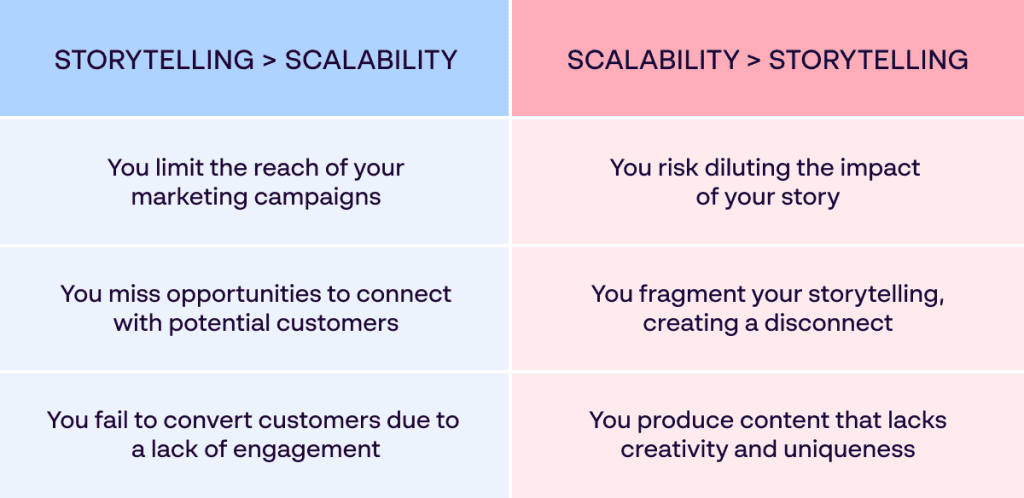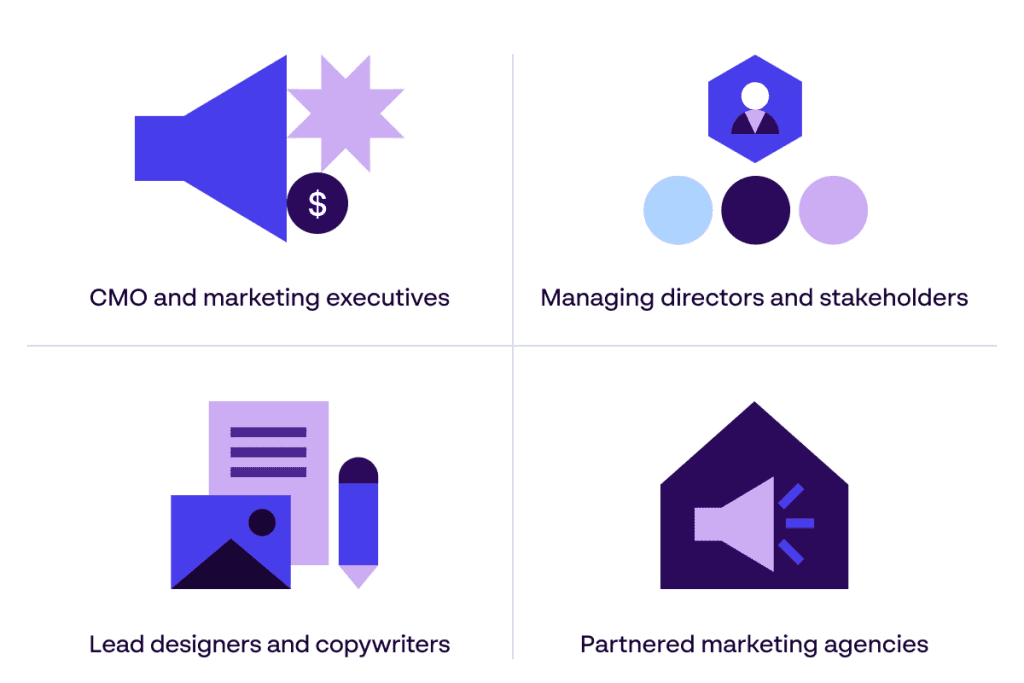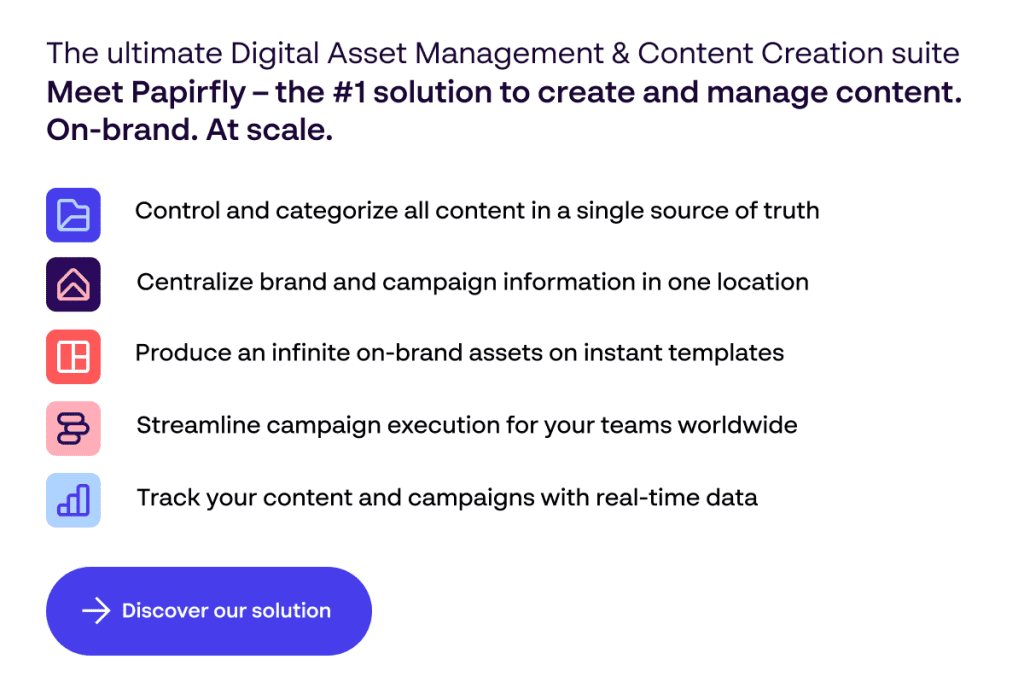Content production is the beating heart of modern marketing campaigns. The more you can create content that engages audiences, communicates your offering, and features on your most relevant channels, the more success your brand will experience in the long term.
And while there are many moving parts to the content creation process, the foundation for success can often boil down to two main factors:

The most effective content creation strategies understand how crucial both these components are to reaching and capturing the imagination of potential customers. Prioritising one over the other – or failing to fulfil either – limits your marketing strategy, making life more difficult for you and your colleagues.
So, how do you properly balance story and scale in content distribution? In this article, you’ll discover the importance of both pillars and uncover strategies to help you make the best of both worlds.
What is storytelling in marketing?
The world’s most successful brands have a story to tell:
- For Apple, it’s a story of challenging the status quo through innovation and creativity
- For Dove, it’s the idea that beauty is diverse and should be celebrated in all forms
- For Patagonia, it’s making the world a better place through eco-friendly initiatives
These companies, and many more like them, invest a substantial amount of time and resources into crafting marketing narratives that go beyond facts, figures and features. Why? Because what truly captures the hearts and minds of consumers is a compelling story that explains who you are, what you do, and how you can help them.

In a world where you’re competing with dozens, if not hundreds, of companies for people’s attention and custom, your brand story must set you apart from the crowd. When done well, you foster more meaningful, emotional relationships than data can do on its own, speaking to audiences in a way that’s digestible, universal and inspiring.
Take TOMS as an example. Their “One for One” model is built around their founder Blake Mycoskie’s experience seeing children struggling without shoes in Argentina. They consistently publish content that emphasises this altruistic message, helping people understand the vision behind their business.
Why is brand storytelling so important for content creation?
Brand storytelling inspires and motivates people to act
Tapping into people’s emotions through a relatable, empathetic or compelling story helps people get behind your brand. If people understand the narrative behind your products, services and actions, they are more likely to buy into you as a business.
Brand storytelling simplifies complex messages and concepts
A huge part of modern audience engagement is keeping things simple. A well-crafted story makes it easier for people to understand who you are and what you can do for them, and also makes your offering more memorable in the long term.
Brand storytelling enhances people’s trust in your brand
Brands that use storytelling to strengthen their content strategies are instantly considered more credible and authoritative. A story helps to humanise your brand, which in turn creates more trust with customers than speaking to a faceless business.
Brand storytelling stops you from sounding salesy
Fundamentally, storytelling allows you to communicate authentically and empathetically with your audiences. Rather than simply tell them why they should use you, a story presents your offering in a fresh, compelling way that speaks to them on a deeper level.

What is content scalability?
If storytelling is the message at the core of your content, scalability is how you get this message to the masses.
As you might expect, content scalability (or content scaling) refers to how you distribute your content across the numerous channels and formats available to modern marketers.
Content production at scale – while simultaneously delivering high-quality output – is arguably the biggest problem today’s CMOs and marketing leaders face.

But as the range of content marketing channels grows, as well as customers’ expectations to receive content at multiple touchpoints, scalability is something that cannot be ignored.
Effective content scaling means identifying ways to produce content faster, simpler and more cost-effectively, without seeing any dip in the quality or relevance of your assets.
Why is scalable content marketing so important?
Scalable content marketing builds your brand awareness
Maintaining a constant flow of physical and digital content goes a long way to raising people’s awareness of your brand, your story and your offerings. The more you can appear on your audiences’ preferred channels, the more their understanding of your company grows.
Scalable content marketing improves your authority
Similarly, having a consistent and frequent presence on various marketing channels makes your brand appear more authoritative and a “leader” in your space. If you post infrequently or have a smaller presence, that can be a red flag.
Scalable content marketing drives more conversions
Simply put, the wider the spread of your content marketing campaigns, the more avenues there are for customers to engage with your brand. This can significantly boost your website traffic, direct purchases and other conversions you track.

The need to balance story and scale in content creation
As you can tell, storytelling and scalability are both fundamental pillars of success in today’s marketing landscape. However, simply being aware of their importance isn’t enough to achieve the best results – you must balance both in your content creation strategy to unleash your marketing’s full potential.
To demonstrate why, let’s look at what problems can occur when you prioritise one over the other:
Too much story, not enough scale
The art of storytelling requires a great deal of attention and creativity to nail down. However, if you prioritise this over the scale of your content production, it can mean:
- You limit the reach of your marketing campaigns, curbing your potential for growth
- You miss opportunities to connect with potential customers on certain channels
- You fail to convert customers due to a lack of engagement across touchpoints
Too much scale, not enough story
On the flip side, if you prioritise producing content for all channels at the expense of story and visuals:
- You risk diluting the impact of your narrative and its emotional impact on audiences
- You fragment your storytelling, creating a disconnect that alienates your customers
- You produce content that lacks creativity and uniqueness, turning your marketing bland
In a nutshell, both story and scalability must be equally prioritised to make your content creation as effective as it can be. To make this ambition a reality, you need the right strategies behind your marketing efforts.

6 content creation strategies to balance storytelling and scalability
If you are keen to ensure your content marketing tells stories that capture people’s imagination, and that this can be produced efficiently and consistently to the largest possible audience, here are 6 good ideas to help you find the perfect balance.
1. Let your creatives craft the narrative for your campaign storytelling
While story and scale have equal weight in the content marketing spectrum, story must come before scale. As we highlighted earlier, there’s no benefit in creating a tonne of assets if the story behind them doesn’t connect as intended.
So, designate a creative team to nail down the story behind your brand, and the core visuals, copy and imagery that will best communicate that message. How you construct this team is up to you:

Partnering with a marketing agency can be a beneficial first step. Their ability to look at your company from an objective, outside perspective can help prevent any subjective bias from compromising the power of your brand storytelling.
By giving your most creative minds the freedom to create and mould your story, you lay the foundation for content to flow with the right intent.
2. Make your brand story accessible and understandable for all content creators
After you cement the story behind your campaign and establish the templates for conveying it in your content, you must share this with your teams around the world – not just your marketers.
A crucial key to content marketing at scale is giving more people the power to produce assets that reflect your overall brand story (we’ll discuss this further in tip #3). However, if you don’t make this story and its supporting visuals easily accessible, your creators may veer off course, affecting the consistency and strength of your message.
A printed brand guidelines booklet doesn’t cut it in today’s digital-first, globalised world. Instead, an online brand portal and Digital Asset Management (DAM) system can help your people understand the story behind your brand, and reflect it as intended for their own audiences.

A brand portal allows you to present the digital assets behind your campaign in the context of your brand story. This helps your teams engage with and understand your vision, so they can execute content with this direction in mind.
Meanwhile, a well-structured DAM system does more than manage your content and distribute it across your teams. It gives your people a complete overview of your campaign assets and messages, so they can learn from and apply them in future.
Plus, if your DAM solution allows you to categorise assets according to their campaign, location and other parameters, your teams can find and reference these exact examples for their ongoing content creation efforts.
Essentially, the combination of a brand portal and DAM system has the power to educate your entire workforce on your story, which then gives them the power to create content that evokes this message themselves.
3. Harness technology to publish great content at an even greater scale
Of course, not everyone is a skilled designer or evocative copywriter. But the right content creation tools can help anyone produce on-brand, studio-quality assets – and do so at an unprecedented scale.
Investing in template software that provides a safe framework for your users, with the wriggle room to get creative within these parameters, allows you to significantly speed up content production and open this avenue to frontline employees who lack the requisite design skills.
These smart templates do more than make the content creation process smoother and simpler:
- Individual teams can personalise and localise content so it tells your story in a way that resonates with their specific audience
- Multiple templates enable your marketers to adapt content to different formats seamlessly – video, digital banners, social media posts, posters, etc.
- Content stays consistent on all channels through centralised brand governance
Explore the content creation software available and bestow your people with the ability to scale up production to another level, all without compromising the strength of your storytelling or the quality of your output.
4. Coordinate a content calendar that lets your story flow
No matter how strong the story behind your campaign is, or how many people have the tools to produce content at scale – a disorganised campaign is doomed to fail.
Plotting out a structured content or editorial calendar helps you publish content at the right time, on the right channels, to best deliver your campaign’s narrative. More than this, it also gives you an outline of how much content you’ll need for your campaign to guide your creators.
This stops over-scaling from diluting your messages. By spending time on a calendar or schedule for each campaign, you can coordinate your content requirements to deliver the maximum impact for your audiences worldwide.

5. Repurpose content for multiple marketing channels and formats
A smart first step to scaling up your content is through repurposing. This is when you take a central asset and adapt this to other formats and for other audiences.
For example, you may have a 10-page brochure that breaks down your organisation’s mission, vision and purpose. That one brochure could then spin off into:
- A series of animated videos for YouTube or TikTok
- A collection of carousels for your social media channels
- Several blog posts on your website
- A group of banner ads with key messages from the booklet
By repurposing, you do more than extend the life of a more comprehensive piece of content. You ensure that everything that spawns from this central point shares the same story, visuals and values on your wider channels, so your brand consistency is never in jeopardy.
6. Prioritise brand consistency at every touchpoint of your marketing
Whatever story you want to tell, on however many channels you want to utilise – brand consistency is key.

Being authentic and constant in how you portray your content’s story is the foundation for building trust with your audience. If any stage in your customer journey breaks, it can make your story feel disingenuous, reducing its emotional pull.
Using content creation tools, such as intelligent design templates, helps ensure that you develop content fitting your brand guidelines and convey your unique creative vision, no matter how much you produce.
Marketing content in balance: Making both story and scale your priority
There is no questioning the value of brand storytelling in making your content as captivating and engaging as possible for your audiences. It’s just as true that without a scalable approach to content marketing, you won’t be able to get that message out at the speed and frequency it needs to succeed.
We hope this article has helped you consider the importance of storytelling and scalability in your content production, and whether you have found the right balance in your organisation.
By taking stock of our tips and strategies, you can take a significant step towards marketing that captures attention, sustains audience engagement, and delivers impact at every touchpoint.

Table of contents:
- What is storytelling in marketing?
- What is content scalability?
- The need to balance story and scale in content creation
- 6 content creation strategies to balance storytelling and scalability
- Marketing content in balance: Making both story and scale your priority
